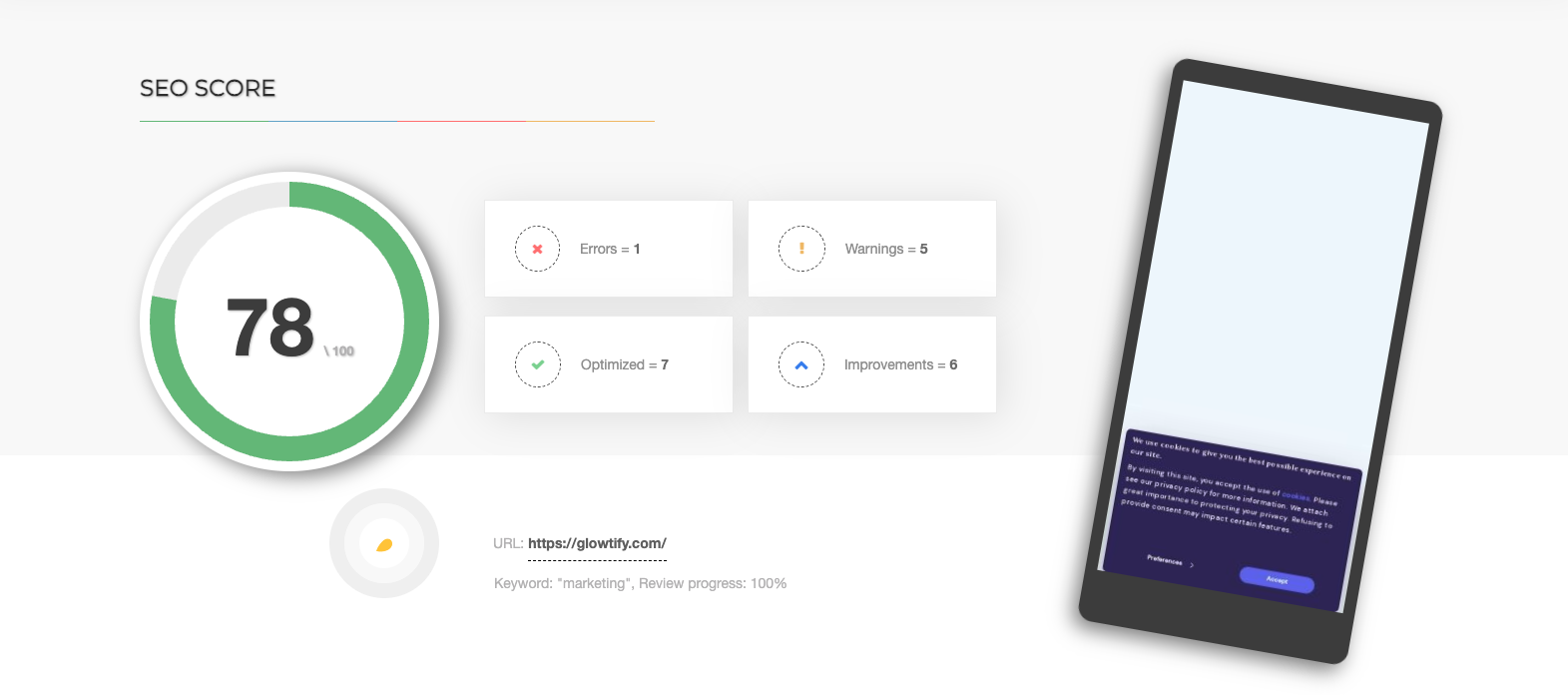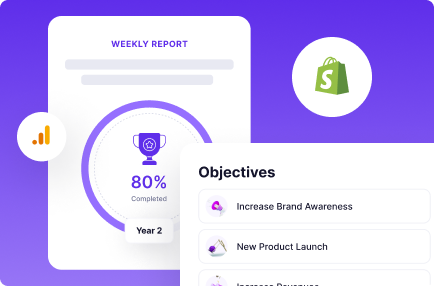Table of Contents
In the high-paced, constantly evolving world of ecommerce, businesses have traditionally stuck to a two-peaks marketing model. This model, while tried and tested, focuses on two main revenue-generating periods within a year, usually coinciding with significant events or holidays. But this leads to a significant issue. High peaks of revenue generation are often followed by daunting valleys, or periods of reduced sales, which ultimately results in an unpredictable and inconsistent sales performance. For businesses aiming for steady growth and stability, these drastic fluctuations can pose a serious challenge and leave them questioning the effectiveness of their marketing strategies.
In this article, we introduce a paradigm shift to this standard model, presenting an innovative approach known as the ‘Four-Peaks’ marketing calendar. This strategic model encourages a more balanced distribution of marketing efforts across the year, leveraging a variety of opportunities, including major holidays, cultural moments, and product release cycles. By integrating real-life case studies and offering actionable strategies, we illustrate how adopting the ‘Four-Peaks’ approach can lead to more stable growth patterns, higher customer engagement, and ultimately, long-term success in the fiercely competitive ecommerce space. By the end of this exploration, you’ll understand how this strategy can help reshape your business narrative, turning the traditional peaks and valleys into consistent, scalable growth.
A Glimpse into the Traditional Two-Peaks Revenue Model
The Two-Peaks Revenue Model has long been the bread-and-butter strategy for many ecommerce businesses. This model places a considerable focus on two significant sales periods during the year, usually coinciding with widely recognized holidays or events such as Black Friday, Cyber Monday, Valentine’s Day, or Mother’s Day. Strategic planning and marketing efforts are ramped up during these periods to maximize sales, with businesses offering deals and discounts to entice customers.

However, a closer examination of this model reveals an inherent shortcoming – it neglects the rest of the year. While the two peaks represent periods of immense revenue generation, they’re typically surrounded by periods of lesser activity. This results in a cyclical pattern of high sales followed by slumps, which is not ideal for businesses striving for steady growth and consistency.
The Impact of Peaks and Valleys on Marketing Strategies and Outcomes
The peaks and valleys resulting from the conventional Two-Peaks Revenue Model greatly affect marketing strategies and outcomes. During peak periods, businesses often find themselves in a frantic race against time and competition to capture as much market share as possible. The effort to outperform competitors often leads to substantial advertising spend, putting immense pressure on marketing teams.
Conversely, the valleys, or off-peak periods, represent the times when ad spending and overall growth decline. Despite these being periods of potentially creative work, the lack of a natural narrative or purchasing impetus makes it difficult for businesses to maintain engagement with their customers. This cyclical fluctuation in marketing efforts can lead to inconsistent messaging, fluctuating customer engagement, and ultimately unpredictable business performance. A prime example is the case of FC Goods, which experienced similar peaks and valleys before reevaluating its marketing strategies.
Transitioning to a ‘Four-Peaks’ Marketing Calendar for Your Ecommerce Business
The Four-Peaks Theory marks a significant departure from the traditional Two-Peaks Revenue Model. Rather than limiting revenue generation to two primary periods in a year (usually centered around significant holidays), this innovative theory promotes the idea of dividing the marketing calendar into four major sales events or ‘peaks’. This way, businesses can aim for a steadier, evenly spread revenue stream throughout the year, effectively ironing out the severe troughs seen in the two-peaks model.

Think of the ‘Four-Peaks’ theory as an evolution in the ecommerce landscape. It is not just about adding more peaks into the mix but reimagining the idea of what a ‘peak’ could entail. Instead of being heavily reliant on major holidays, each peak can pivot around a significant brand event, a thematic sale, or a unique product launch. This strategy offers a chance to create compelling narratives that fuel customer engagement and drive purchases consistently throughout the year. The LEGO Group, for example, structures its calendar around new product launches, major anniversaries, and significant pop-culture events, ensuring that there’s always something fresh to engage consumers.
The Advantages of Adopting a Four-Peaks Calendar
The Four-Peaks calendar can be a game-changer for your ecommerce business, offering significant advantages that go beyond simply extending your sales periods. Here are some key benefits:
- Smoothing Revenue Fluctuations: The traditional Two-Peaks Revenue Model is often characterized by sharp peaks and deep valleys. With a Four-Peaks Calendar, you have more opportunities for revenue generation spread throughout the year. This helps to balance your income, making cash flow management and financial forecasting more reliable.
- Building Resilience: Relying heavily on just a couple of key sales events exposes your business to potential risks. Market uncertainties, shifts in consumer behavior, or stiff competition during these periods can adversely affect your bottom line. By spreading your revenue sources across four peaks, you can increase your business’s resilience against these uncertainties.
- Encouraging Marketing Innovation: A Four-Peaks Calendar provides more room for experimenting with diverse narratives and campaigns. Each peak could pivot around a different theme or goal, ranging from brand storytelling to product showcasing, creating a vibrant and constantly evolving marketing narrative.
- Driving Customer Engagement: The additional peaks can help keep your audience engaged throughout the year. By creating more opportunities for interaction, you can foster stronger relationships with your customers, increasing their loyalty and lifetime value.
- Enhancing Brand Visibility: With more significant events in your marketing calendar, your brand remains in the public eye for longer periods. This continued exposure can enhance your brand visibility, recognition, and recall.
- Promoting Product Diversity: More peaks mean more opportunities to spotlight different product lines or services. This can help you showcase the breadth and depth of your offerings, encouraging customers to explore and purchase a broader range of products.
The Four-Peaks Calendar is not just about adding more sales periods; it’s about strategically diversifying your marketing efforts to drive sustained growth. As you plan your peaks, remember to align them with your brand story, values, and customer interests for maximum impact.
Redefining Ecommerce Performance with Storytelling and Purchase Opportunities
The Four-Peaks Theory goes beyond just increasing sales events; it serves as a tool to redefine ecommerce performance by integrating storytelling with strategically timed purchase opportunities. Storytelling is a potent marketing tool that can evoke emotions, build trust, and humanize your brand, while purchase opportunities are carefully planned sales periods that align with your brand story.
Consider Patagonia, an outdoor clothing brand known for its environmental activism. One of their peaks might be Earth Day, where their storytelling revolves around their commitment to sustainability, showcasing how their products are made and the causes they support. The build-up towards Earth Day could involve content around sustainable practices, environmental facts, and behind-the-scenes of Patagonia’s eco-friendly operations. When Earth Day arrives, they could launch a special product or a sale, turning the engrossed audience into customers.

By combining an engaging narrative with strategic sales periods, the Four-Peaks Theory creates a more meaningful ecommerce experience. It ensures customers are not just passively purchasing products but are actively engaged in your brand’s journey, thus driving sustained growth and success for your ecommerce business.
Building a Growth-Oriented Calendar: Key Strategies to Maximize Peaks
Creating a growth-focused calendar means much more than just setting dates and defining offers. It involves recognizing the potential of strategic timing, understanding cultural influences, optimizing product cycles, and curating value-added experiences. Let’s dive deeper into these key strategies:
Aligning with Holidays
Planning your marketing around holidays is a tried and true method to drive sales. Holidays, both big and small, have ingrained shopping habits. For instance, Macy’s Thanksgiving Day Parade has become synonymous with the kickoff of the holiday shopping season. They align their marketing with the holiday, starting with the parade that attracts millions of viewers, creating a perfect springboard for their Black Friday and Cyber Monday promotions.
On a smaller scale, niche holidays can provide unique opportunities. For example, National Coffee Day could be a perfect peak for a coffee brand like Starbucks, which offers discounts and introduces special flavors to celebrate this day.
Leveraging Cultural Moments
Cultural moments have an impact that can resonate globally, transcending traditional boundaries. These could include events such as the World Cup, the release of a highly anticipated movie or TV series, or even viral social media trends.
Nike, for instance, capitalizes on cultural moments around major sports events. During the FIFA World Cup, Nike releases special edition footwear and runs ads featuring popular athletes. These strategies create a buzz among fans, driving sales and strengthening the association between Nike and football culture.
Planning Around Cyclical Product Releases
Cyclical product releases provide an opportunity for businesses to generate hype and anticipation. Tech giant Apple is a master of this strategy. They typically align their product launches, like the latest iPhone or MacBook, with a marketing peak. The built-up anticipation combined with strategic release timing results in a sales surge that could dwarf even their holiday sales.
Fashion retailers also use this strategy effectively. Brands like Zara and H&M, known for their fast-fashion model, release new collections seasonally, which aligns with their marketing calendar, creating a constant cycle of anticipation and satisfaction.
Providing Value Beyond Discounts: Crafting an Inclusive Calendar
While discounts play a key role in driving sales, they are not the only value you can offer your customers. Exclusive experiences, loyalty programs, personalized service, or even educational content can add value to the customer journey.
Take Sephora, for example. Their Beauty Insider loyalty program rewards members with points for each purchase, which can be redeemed for products. Members also get access to exclusive beauty classes, early access to products, and special events. This value addition strengthens the bond with their customers and makes them feel appreciated beyond the transactional aspect.
Timing Your Launches: Exploiting Major Holidays for Your Marketing Campaigns
A cornerstone of ecommerce success lies in strategic planning around major holidays. By aligning your product launches and marketing efforts with key events throughout the year, you’re able to tap into the consumer’s mindset and stimulate sales. Let’s delve deeper into this strategy.

Kickstarting the Year: Leveraging New Year’s Day and Valentine’s Day
A fresh calendar year marks a time for new beginnings, resolutions, and hope. Businesses can tap into this sentiment by organizing New Year sales to clear out old inventories and introduce new offerings. For instance, the sports apparel giant, Nike, capitalizes on fitness resolutions by running “Just Do It” campaigns, offering discounts on fitness gear to encourage people to kickstart their fitness journeys.
Valentine’s Day, falling in the middle of Q1, offers an excellent opportunity, particularly for sectors such as jewelry, confectionery, and hospitality. But it isn’t limited to these; brands like Apple leverage this holiday to promote their products as an ideal gift for loved ones by offering Valentine’s Day specials on popular products like AirPods or iPads.
Gearing Up for Q2: Making the Most of Memorial Day, Mother’s Day, and Father’s Day
The second quarter of the year introduces several holidays ripe for marketing campaigns. Mother’s Day and Father’s Day provide an opportunity to spotlight products as thoughtful gifts. For instance, personalized gift retailers like Personal Creations ramp up their advertising campaigns with heartfelt messages to promote their custom-made products.
Memorial Day, seen as the gateway to summer, is an excellent time to launch summer lines and clear out spring collections. Companies like Gap often host “Memorial Day Sales,” offering substantial discounts on summer apparel.
Embracing the Summer Season and Back-to-School Vibes: The Third Peak
Summer offers a prime opportunity to host sales around key holidays like Independence Day. Retailers such as Macy’s host Fourth of July sales, offering discounts on a wide variety of products, from clothing to furniture. As summer winds down, the back-to-school season becomes the focus. Tech companies like Dell offer back-to-school deals on laptops and accessories, catering to both students and parents gearing up for the new school year.
Riding the Q4 Wave: Halloween, Black Friday, Cyber Monday, and Christmas
The final quarter is a gold mine for ecommerce businesses. Halloween kicks it off with themed campaigns and products. Businesses like Spirit Halloween capitalize on this spooky season by offering a vast range of costumes and decorations.
The momentum continues with Black Friday and Cyber Monday. For example, electronics giant Best Buy offers doorbuster deals attracting massive consumer attention. The year wraps up with Christmas when consumers are most willing to spend. Brands such as Lego introduce limited edition Christmas-themed sets, which not only boost sales but also enhance their brand appeal.
Diversifying Your Deal Structures for Optimum Reach and Engagement
It’s essential to diversify your deal structures to cater to different customer preferences. Whether it’s flash sales, BOGO deals, or bundle offers, variety ensures you can engage different segments of your customer base. For instance, Sephora frequently offers value sets or bundle deals where customers can try products from a particular brand at a lower price. This not only increases sales but also fosters customer engagement and loyalty. A diverse deal structure helps you appeal to various customer segments and maximize your reach.
Crafting Your Social Media Strategy
In the digital age, a robust social media strategy is integral to a successful ecommerce venture. But it’s not just about promoting products or discounts; it’s about connecting with your audience on a deeper level. Let’s delve into this topic and explore how storytelling, emotional engagement, and unique approaches can shape your brand.

The Crucial Role of Storytelling in Humanizing Your Brand
Storytelling is an art that has the power to humanize your brand, forge emotional connections, and create a memorable identity. When you tell a story that resonates with your audience’s emotions, experiences, or aspirations, you make your brand more relatable and engaging.
Take, for example, the well-known outdoor clothing brand, Patagonia. They consistently tell stories about their environmental conservation efforts and commitment to sustainable practices. These stories not only help to solidify their brand identity but also resonate with their eco-conscious customer base, thereby fostering brand loyalty.
Balancing Sales and Emotional Engagement: Case Study of Amazon and Nike
Striking the right balance between driving sales and creating emotional engagement is crucial for ecommerce success. Amazon is a perfect example of a brand that excels at driving sales. They leverage customer data to provide personalized product recommendations, compelling deals, and seamless shopping experiences that efficiently drive sales.
On the other hand, Nike excels at emotional engagement. Their marketing campaigns, such as the “Just Do It” series, often tell inspiring stories of perseverance, motivation, and ambition. These narratives resonate deeply with their audience, creating an emotional connection that transcends beyond product sales and cultivates a strong brand identity.
The key is to maintain a balance. While driving sales is crucial, fostering emotional connections makes customers more loyal and likely to recommend your brand, enhancing long-term success.
Engaging Audiences with Unique Approaches: The Success of APL
Innovative engagement strategies can set your brand apart in the crowded ecommerce space. A prime example of this is Athletic Propulsion Labs (APL), an LA-based footwear company. APL pioneered a unique engagement strategy by introducing the world’s first “concept-shoe store” on Instagram, providing an immersive and interactive shopping experience for their followers.
Moreover, APL regularly engages its followers through exclusive behind-the-scenes content, sneak peeks into upcoming designs, and spotlighting customer reviews and experiences. This unique approach not only keeps their audience engaged but also creates a sense of community around the brand, proving that thinking outside the box can significantly boost brand success.
Conclusion
Navigating the world of eCommerce can often feel like venturing into uncharted waters, with waves of trends and strategies constantly changing the landscape. To stay afloat and ahead, rethinking traditional methods is crucial. It’s not just about pumping money into your ad account anymore. Instead, it’s about understanding your audience’s journey and enhancing their experience with your brand. This involves adopting innovative approaches like the four-peaks theory, which not only smooths out the revenue valleys but also provides more opportunities for customer engagement.
Moreover, the power of an eCommerce marketing calendar cannot be understated in reshaping your business. Aligning your campaigns with holidays, cultural moments, and product releases, while providing value beyond discounts, can elevate your brand and ensure sustained growth. As we conclude, it’s clear that the key to boosting growth in eCommerce lies in crafting a comprehensive, customer-oriented strategy, and embracing the tools designed to support such strategies. Take the first step towards this transformative journey with Glowtify – a marketing software that’s built to bolster your strategies and fuel your eCommerce growth. Let’s unlock the future of eCommerce marketing together with Glowtify!

Want more SEO traffic?
Discovering the secret to increasing your website’s traffic could be as simple as accessing this Free SEO analyzer tool!
Try it - it's free

